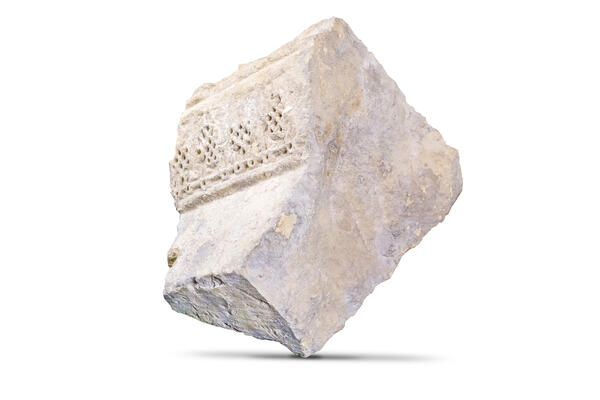The Cathedral Mosque with the Big Minaret was the body of a completed architectural ensemble which was located in Bulgar city political and administrative center. Eastern and Northern mausoleums were included in the ensemble alongside the place of worship. A market and jewelry manufacturing works were nearby.
The Mosque was built in the second half of the 13th century by Batu Khan of the Horde order. The Cathedral Mosque symbolized the Golden Horde Bulgar khanate (the name given to the conquered Volga Bulgaria was called) all-embracing power and strength. The building was of stately proportions, 32 by 34 meters at the foundation. Experts found out that originally the building had a wooden roof supported by 24 columns.
Mihrab — a niche in the Mosque wall, indicating the direction to Mecca was in the southern part. Commonly the mihrab has an arched form and is decorated with ornaments and carvings.
Over the entire history of its existence, the Mosque has been repaired and rebuilt at various times. It was constructed from limestone. It was supplied from existent Syukeevo village territory, located on the right bank of the Volga. As part of the reconstruction process, the corner minarets were faced with tuff — volcanic stone. The wooden pieces were replaced with stone ones. In the 14th century were added windows and doors, external niches, and extra angle towers.
The first restoration was carried out by Peter the Great’s order. In 1841, because of old tunnel dug under a wall by treasure hunters, the Great Minaret collapsed.
Today, a landmark represents an open area. Several richly ornamented elements have survived from the northern facade. They were successfully discovered during excavations in the 60s of the last century. Two of them are exhibited in the Museum of the Bulgarian Civilization. One more stone was discovered in the cultural layer of the mihrab niche area. All components are joined together by a special ornament called “knots of happiness”. The stone shapes were different: arc-shaped samples were mounted in the mihrab niche, the other wide-based stones free from curves adorned the northern part of the Cathedral Mosque.
The Mosque was built in the second half of the 13th century by Batu Khan of the Horde order. The Cathedral Mosque symbolized the Golden Horde Bulgar khanate (the name given to the conquered Volga Bulgaria was called) all-embracing power and strength. The building was of stately proportions, 32 by 34 meters at the foundation. Experts found out that originally the building had a wooden roof supported by 24 columns.
Mihrab — a niche in the Mosque wall, indicating the direction to Mecca was in the southern part. Commonly the mihrab has an arched form and is decorated with ornaments and carvings.
Over the entire history of its existence, the Mosque has been repaired and rebuilt at various times. It was constructed from limestone. It was supplied from existent Syukeevo village territory, located on the right bank of the Volga. As part of the reconstruction process, the corner minarets were faced with tuff — volcanic stone. The wooden pieces were replaced with stone ones. In the 14th century were added windows and doors, external niches, and extra angle towers.
The first restoration was carried out by Peter the Great’s order. In 1841, because of old tunnel dug under a wall by treasure hunters, the Great Minaret collapsed.
Today, a landmark represents an open area. Several richly ornamented elements have survived from the northern facade. They were successfully discovered during excavations in the 60s of the last century. Two of them are exhibited in the Museum of the Bulgarian Civilization. One more stone was discovered in the cultural layer of the mihrab niche area. All components are joined together by a special ornament called “knots of happiness”. The stone shapes were different: arc-shaped samples were mounted in the mihrab niche, the other wide-based stones free from curves adorned the northern part of the Cathedral Mosque.



